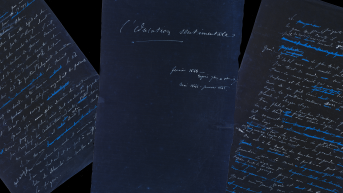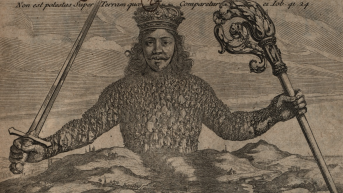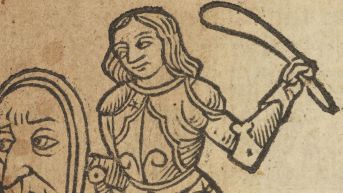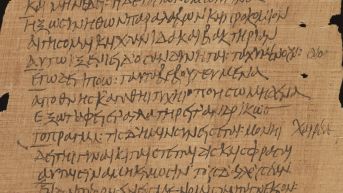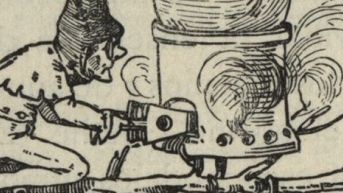Menander Codex
This papyrus contains three Menander comedies. Dating from the third century C.E.,
it is a precious testament to the success of the Athenian comic poet.
The papyri Bodmer IV, XXV and XXVI, comprising three Menander comedies, actually form a single “codex” (in this case, a single bound volume of papyrus), the “Bodmer Menander codex” (classification code PB M in the Sharp/Nongbri system, 2018). It is believed to date from the third century of the common era, a precious testament to the success of Athenian comic poet created nearly a half-millennium after his death. Above and beyond this, the true fame of this document owes to the fact that it includes the only complete Menander play known to this day, the “Dyscolos” (“irascible” or “unbearable”), a play also referred to as “The Misanthrope.” Before the publication of this comedy (1958), all that remained of Menander were citations of a few verses, which were gradually pieced together, beginning in the 19th century, with longer but still fragmentary papyrological references.
We begin with an overview of the time and place in which the Bodmer Menander codex was likely copied down (discussing in this section how the “volumen” form of the book increasingly gave way to the “codex” form). The next section includes a detailed description of the Bodmer Menander codex (notably its script and specificities to its copying). Finally, we explore Menander’s strange disappearance for several centuries and the central role played by the Bodmer Menander codex in the still-ongoing advances in our understanding of this great author, considered the starting point of European comic theatre, as well as in our knowledge about Ancient theatre generally.
André Hurst, University of Geneva


